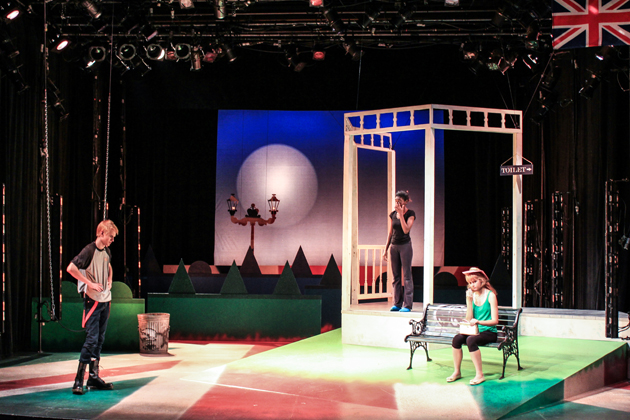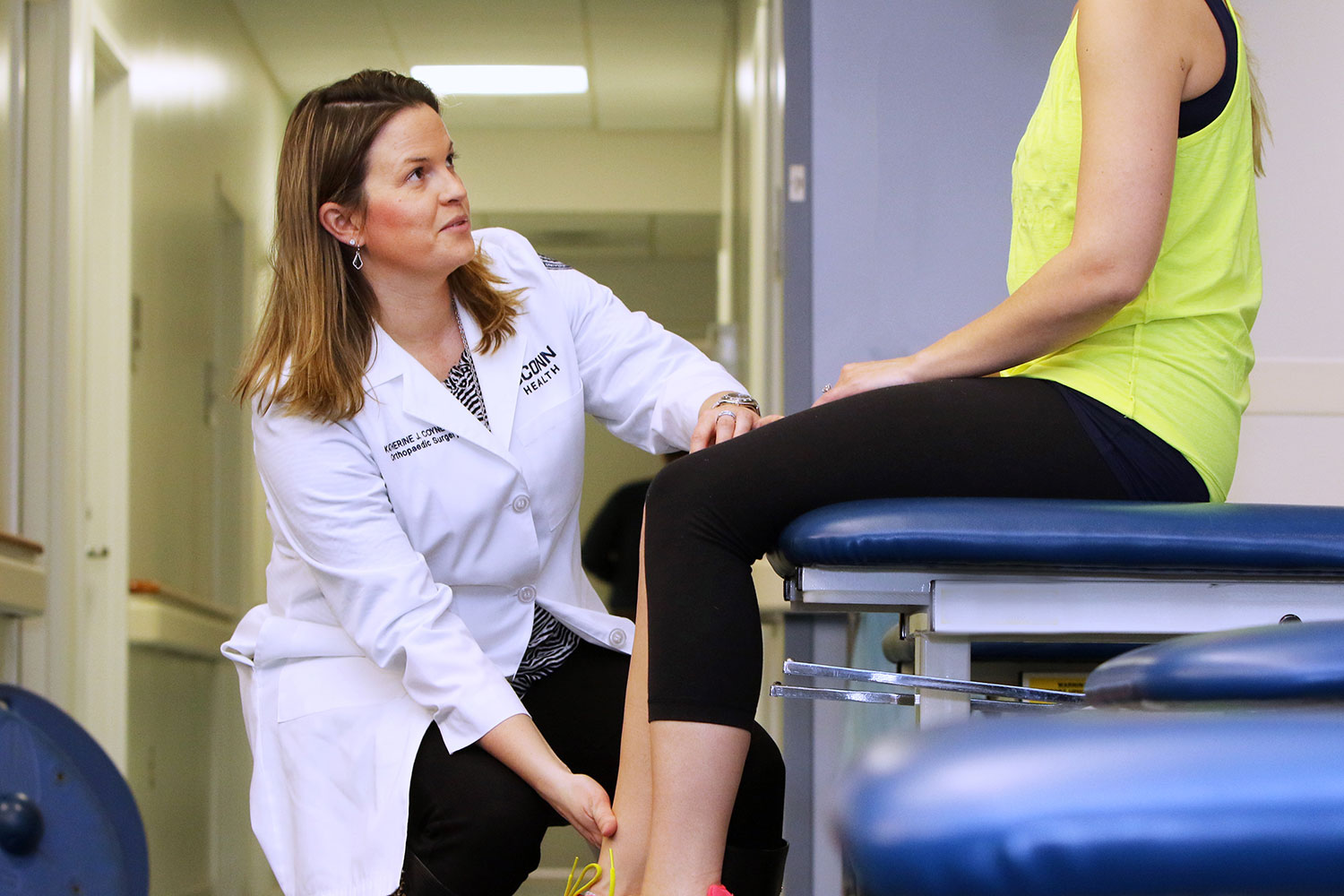Caryl Churchill’s “Cloud 9,” a gender-bending story that crosses oceans and centuries, is studied as part of theater history but was not a play familiar to most students involved in the Connecticut Repertory Theatre production that opens Oct. 23. The production, directed by Vincent Cardinal, head of the Department of Dramatic Arts and artistic director for CRT, runs through Nov. 2 in the Studio Theatre.
“It’s a benchmark play, but not one that students have seen,” says Tim Brown, visiting assistant professor of dramatic arts in the School of Fine Arts, who specializes in scenic design. “It’s significant because it’s one of the first plays written by one of the leading contemporary female playwrights of our time. The challenge for students is getting them to open their minds and do something just as bold as this play.”

“Cloud 9” is a two-act play that takes place in British colonial Africa and in a park in 1979 London, in which actors play one role in the first act and another in the second act. Characters in both acts are portrayed by different actors and in some cases, men and women are cast in reverse roles, providing significant challenges for the actors on stage. The play won a 1982 Obie Award for best play of the year in New York.
Brown says set design for the play also offers a challenge – creating a rural Africa setting during the Victorian era that is transformed during intermission to a location in 20th-century London. It is something Brown has done himself for a production of “Cloud 9” elsewhere, and this prior experience helped him provide advice to Kacey Skurja ’15 (SFA), an undergraduate student in scenic design who had the assignment for the production.
“We know what works, what doesn’t work, but we keep quiet on what doesn’t work in the hopes that the student designer will discover something we would not have thought of,” Brown says. “I think that happened with this show.”
Cardinal agrees: “The set design for ‘Cloud 9’ is a challenge for any designer, as it leaps continents and centuries without textual explanation. Kacey has done a terrific job with finding striking visual similarities between the two locations, enhancing the comedy’s themes and illuminating the story’s context.”
The set design for ‘Cloud 9’ is a challenge for any designer, as it leaps continents and centuries without textual explanation. — Vincent Cardinal, artistic director for CRT
The 100-seat Studio Theatre is an intimate setting, with audience seats just a few feet from a narrow proscenium stage. Skurja had the responsibility of designing the set and coordinating her work with the lighting and costume designers and other members of the creative team.
“I was kind of nervous, but excited about the opportunity,” Skurja says. “It was really hard. It was difficult to have enough scenic elements to make both places with the space provided and our budget.”
Skurja’s design incorporates the Union Jack, the national flag of the United Kingdom, as an element on the floor of the stage. African grasses in the first act are transformed into hedges for the second act, a tree becomes a lamp post, and a porch turns into a park gazebo.
Brown says encouraging students to take risks, allowing them to make mistakes and work through the problem, is an important part of the learning process.
“You’re going to mess up, but that’s the best way to learn,” he says. “That’s what’s great about CRT. I’m here to catch you and help fix it.”
Skurja says that as she moved through the design process, she encountered some unexpected issues.
“I did take a lighting class and a costume class, but I wasn’t as aware as I should have been about some things,” she said, during a break in directing the set construction. “For example, my porch is really tall, and I didn’t think about how that would affect the lights. I learned yesterday you have to put sealers on stuff because the paint is going to run off on costumes, which I never thought of. And spacing – walking between the porch and the swing, you have to be aware of what they have to walk through. It’s hard to figure out on paper what it’s going to look like.”
Skurja says it’s gratifying to hear supportive comments from the actors and technical staff she has worked with over the past several weeks.
“I’ve heard a lot of people walk in and go, Wow!” she says. “Everybody loves it. I hope everybody still loves it later. It’s awesome to see people’s reactions.”
For more information on the CRT production of “Cloud 9” and for tickets, go to the CRT website.



